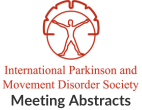Acute movement disorders in Tunisian childhood
Objective: To describe clinical, imaging and therapeutic features in 80 children with acute movement disorders. Background: Acute movement disorders are usually misdiagnosed in childhood. Our…Profile of urgent care visits in movement disorders
Objective: To assess the spectrum of clinical complaints and disorders at an Urgent Care Movement Disorders clinic. Background: Movement disorders patients not infrequently require urgent…Self-perception of vocal handicap in Parkinson’s disease
Objective: The objective of this study was to evaluate self-perception of vocal handicap in individuals with Parkinson's disease at various stages of diagnosis. Background: The…Therapeutic effect of onabotulinumtoxinA (BoNT/A) in hemifacial spasm and trigeminal neuralgia post Ramsay Hunt Syndrome type II
Objective: To evaluate the therapeutic and preventive effect of OnabotulinumtoxinA (BoNT/A) in the treatment of hemifacial spasm, bruxism, and trigeminal neuralgia post Ramsay Hunt Syndrome.…Duration of levodopa treatment and prevalence of osteoporosis in patients with Parkinson’s disease
Objective: To assess whether the prevalence of osteoporosis increases with the duration of levodopa treatment in patients with Parkinson's disease. Background: Patients with Parkinson's disease…Participant feedback in the PREDICT-PD study
Objective: To explore the underlying motivation behind participation in PREDICT-PD and whether this had an influence on later drop out from the study. Background: The…How accurate is the prediction of driving ability in a Parkinson’s clinic setting?
Objective: To determine whether routine clinical assessment (motor examination, cognitive assessment and global clinical impression) accurately predicts the ability of People with Parkinson's (PwP) to…Cognitive effects of pramipexole in the chronic low-dose (CLD) 1-methyl-4-phenyl-1,2,3,6-tetrahydropyridine (MPTP)-treated macaque model of Parkinson’s disease
Objective: To assess the cognitive functions in 1-methyl-4-phenyl-1,2,3,6-tetrahydropyridine (MPTP)-treated macaques following acute administration of Pramipexole (PPX). Background: Parkinson's disease (PD) is characterized by both motor…The effect of walking speed on postural stability in Parkinson’s disease fallers
Objective: This cross-sectional study aimed to evaluate the effect of imposed faster and slower walking speeds on gait rhythmicity in people with Parkinson's disease (PD)…Association of the DRD2 (CA) n and DRD3 Ser9Gly polymorphisms with Parkinson’s disease and response of dopamine agonists
Objective: To investigate the association between dopamine receptor D types 2(DRD2) (CA)n and types 3 (DRD3) Ser9Gly polymorphisms and the risk of Parkinson's disease (PD),…
- « Previous Page
- 1
- …
- 87
- 88
- 89
- 90
- 91
- …
- 207
- Next Page »
